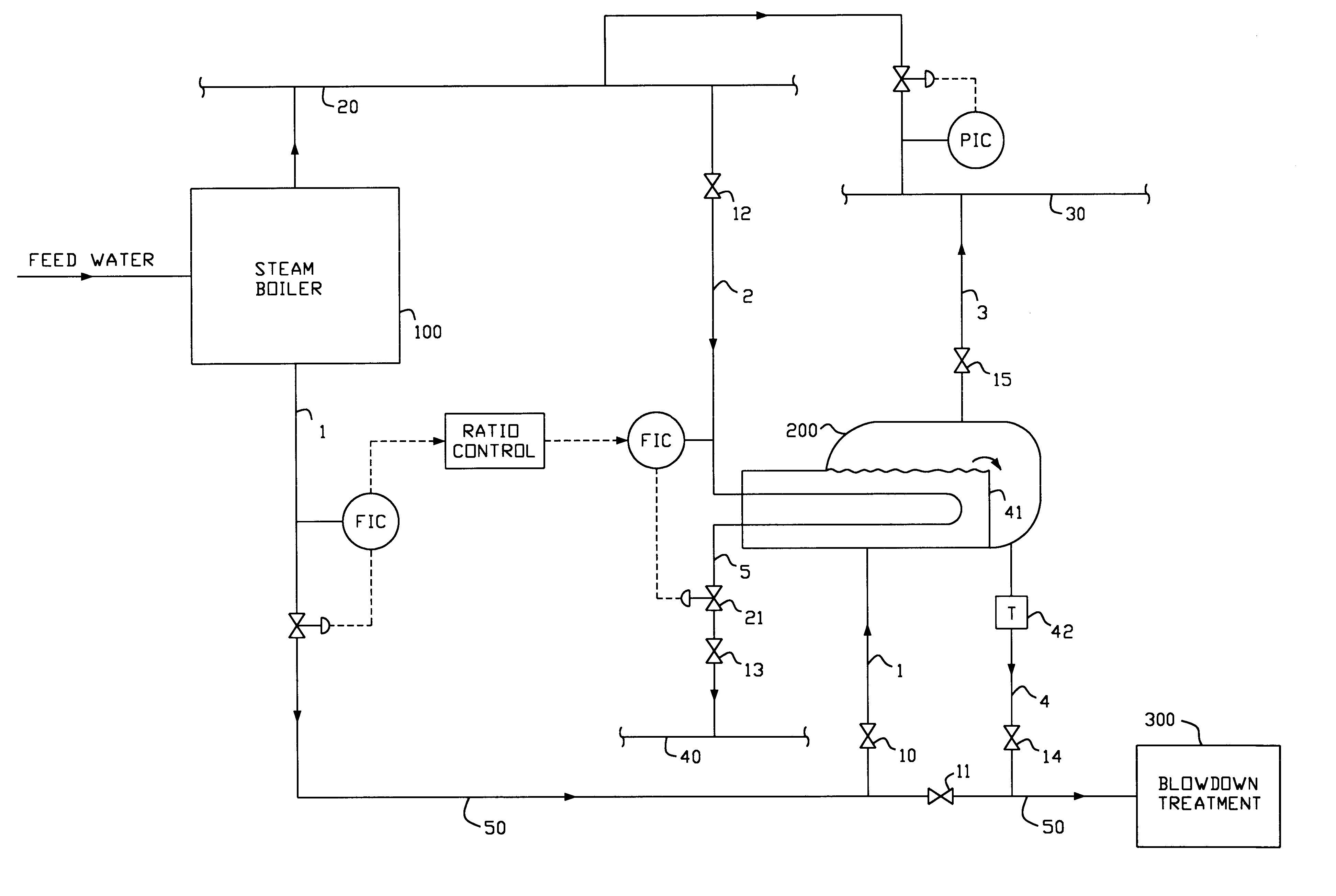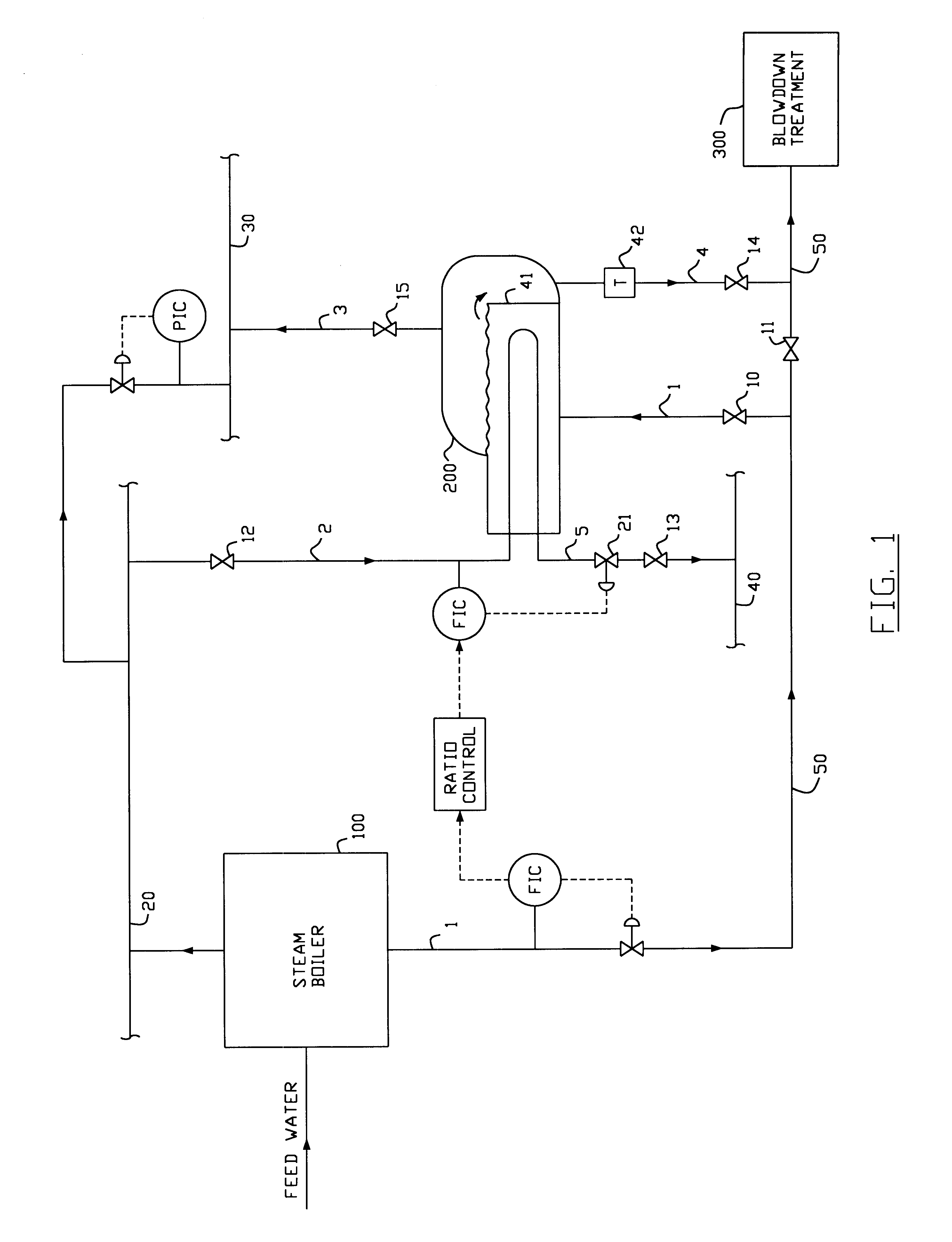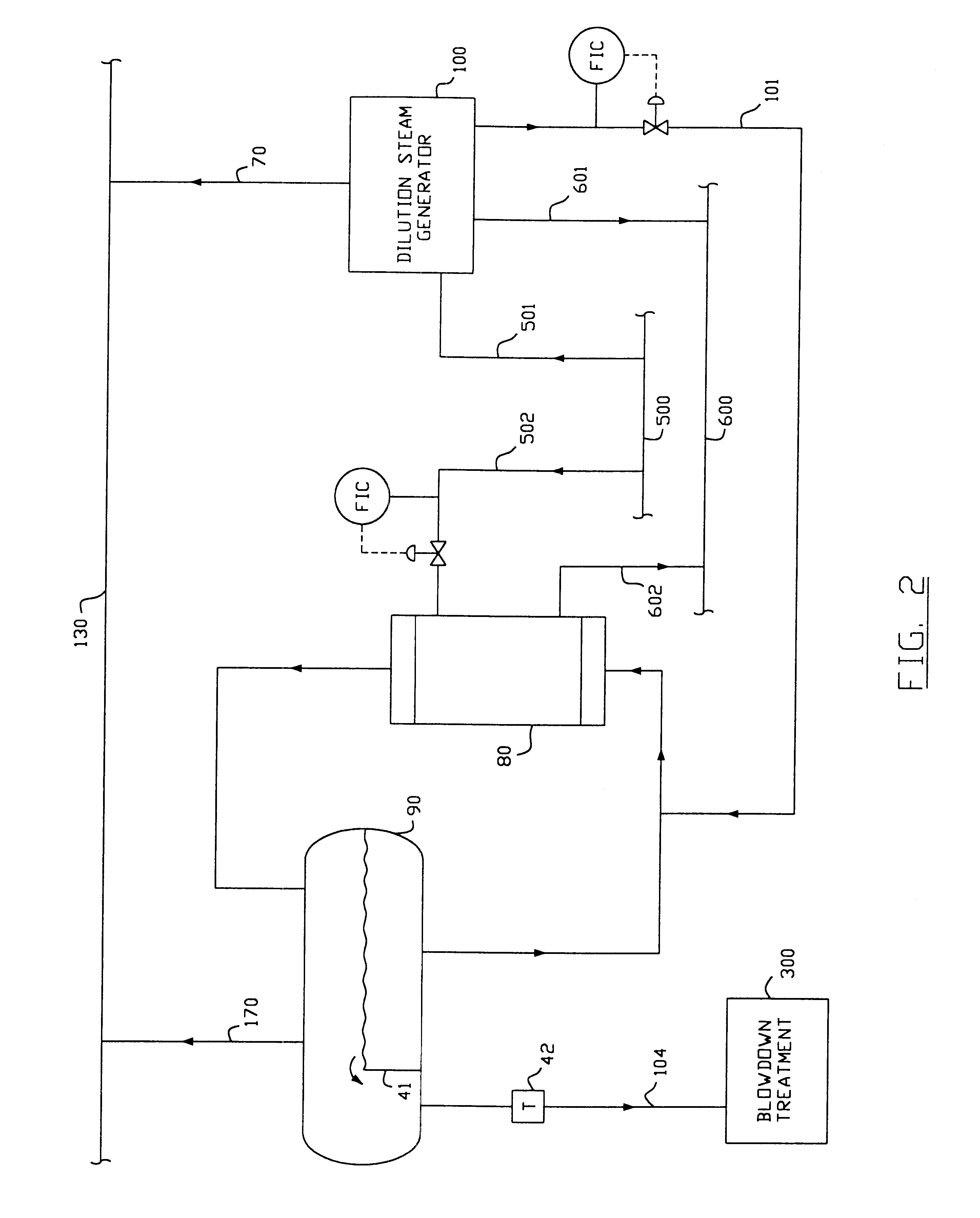Methods for recycling process wastewater streams
a technology of wastewater stream and process, applied in the direction of steam boiler components, lighting and heating apparatus, steam separation arrangements, etc., can solve the problems of expected rcd unit fouling over time, and achieve the effect of reducing maintenance cost and down time, reducing the mean fouling rate, and reducing the cost of chemical treatmen
- Summary
- Abstract
- Description
- Claims
- Application Information
AI Technical Summary
Benefits of technology
Problems solved by technology
Method used
Image
Examples
Embodiment Construction
This invention focuses on the recovery of blowdown streams from a steam generating device, such as a steam boiler or a process steam generator, so that the net blowdown rate can be appreciably reduced. The resulting reduction in net blowdown rate does not compromise the original equipment's performance or reliability, but rather, maintains or reduces TDS level in the primary evaporator unit while allowing chemical treatment costs to be reduced. In order to explain the novelty of this invention better, some background in steam operations are briefly mentioned below.
It is customary to refer to an operating plant's steam supply and demand status as the "steam balance". Many pieces of steam related operating equipment make up the system. Each piece of equipment requires a specific quantity and quality of steam supply. For instance, some equipment, such as steam turbine or thermal compressor, extracts useful work from a higher pressure steam by letting down the steam to a lower pressure ...
PUM
| Property | Measurement | Unit |
|---|---|---|
| pressure | aaaaa | aaaaa |
| concentration | aaaaa | aaaaa |
| pressure | aaaaa | aaaaa |
Abstract
Description
Claims
Application Information
 Login to View More
Login to View More - R&D
- Intellectual Property
- Life Sciences
- Materials
- Tech Scout
- Unparalleled Data Quality
- Higher Quality Content
- 60% Fewer Hallucinations
Browse by: Latest US Patents, China's latest patents, Technical Efficacy Thesaurus, Application Domain, Technology Topic, Popular Technical Reports.
© 2025 PatSnap. All rights reserved.Legal|Privacy policy|Modern Slavery Act Transparency Statement|Sitemap|About US| Contact US: help@patsnap.com



